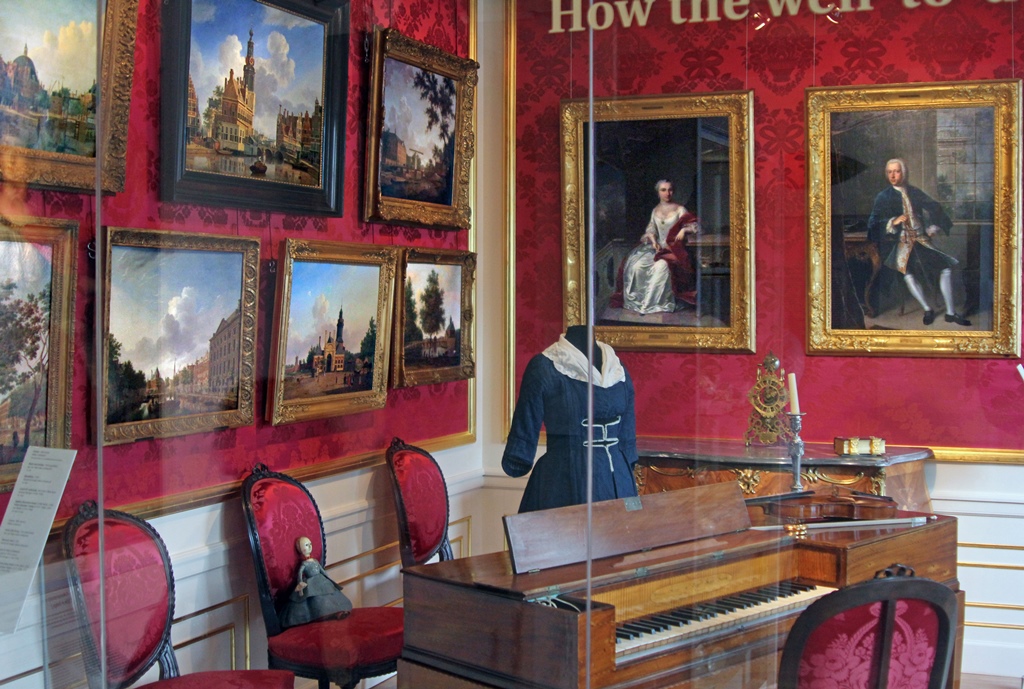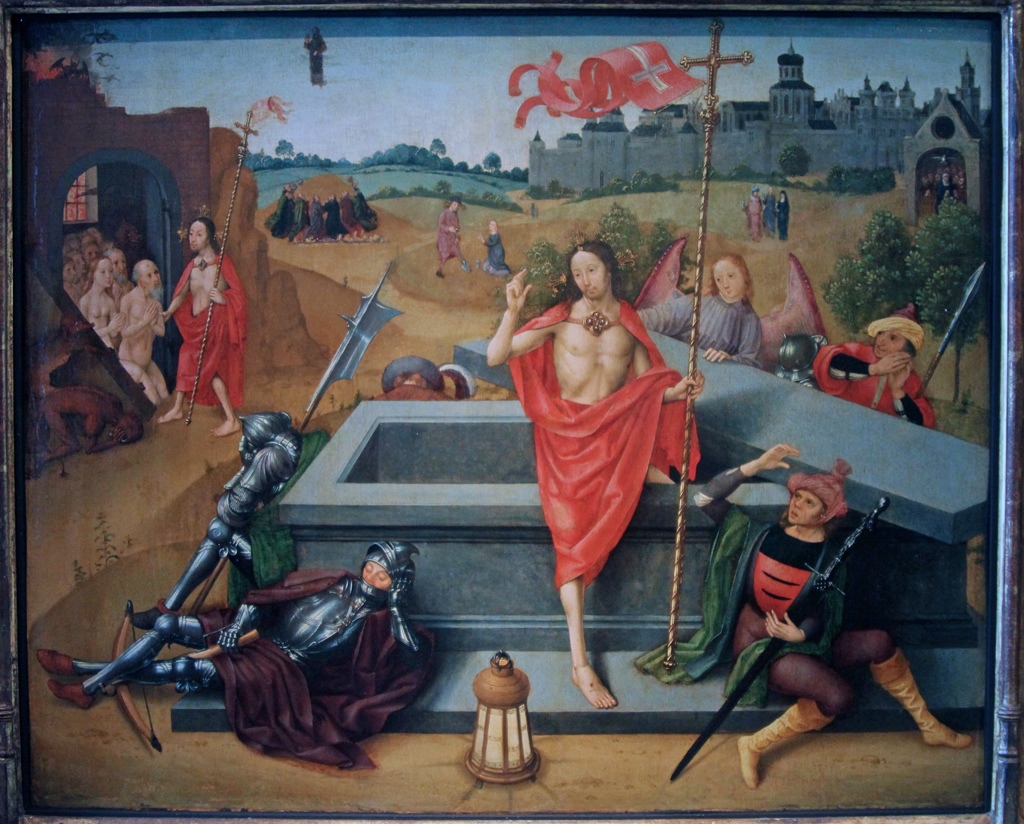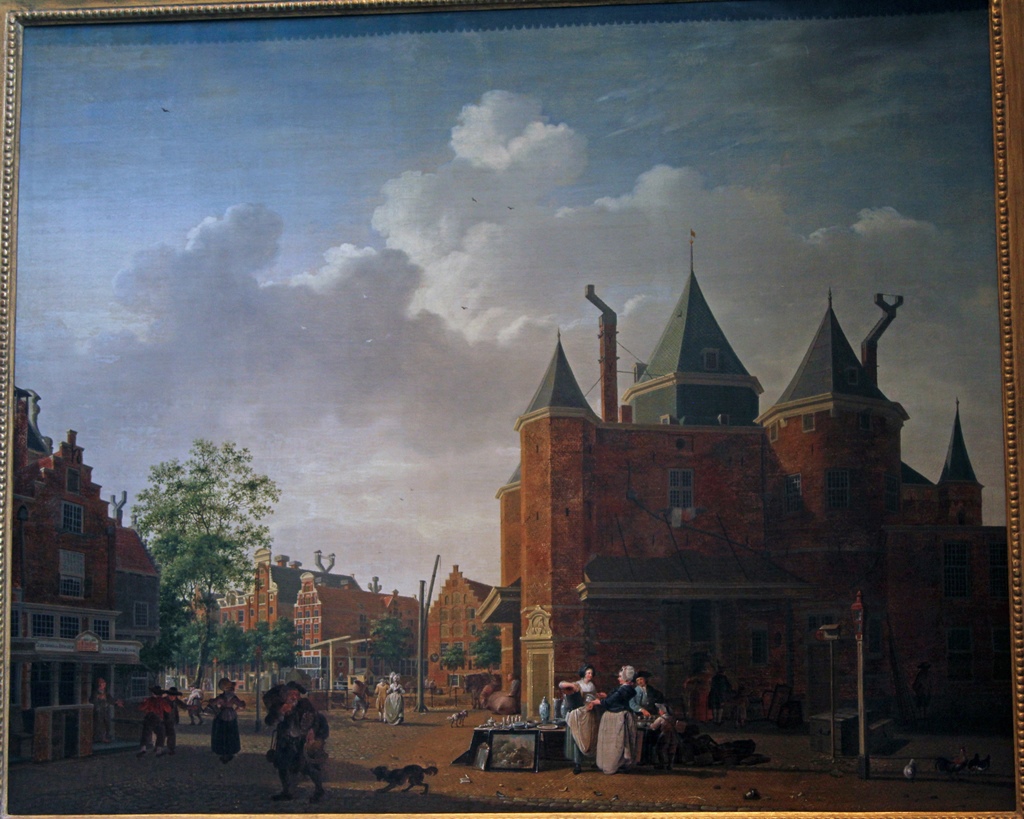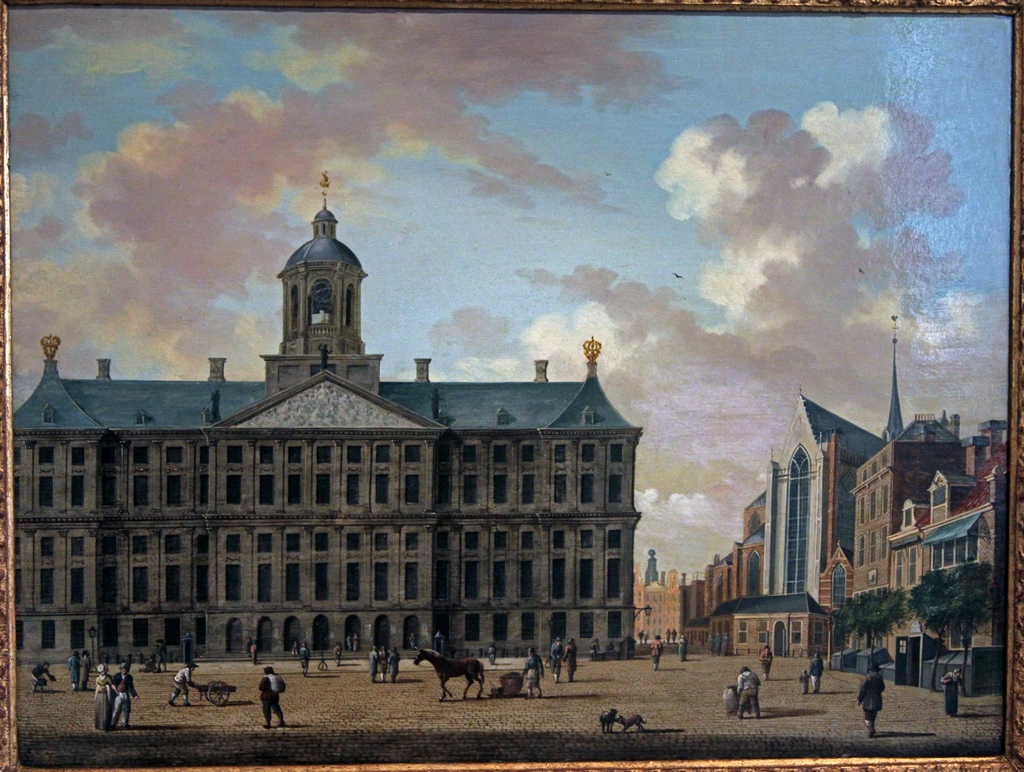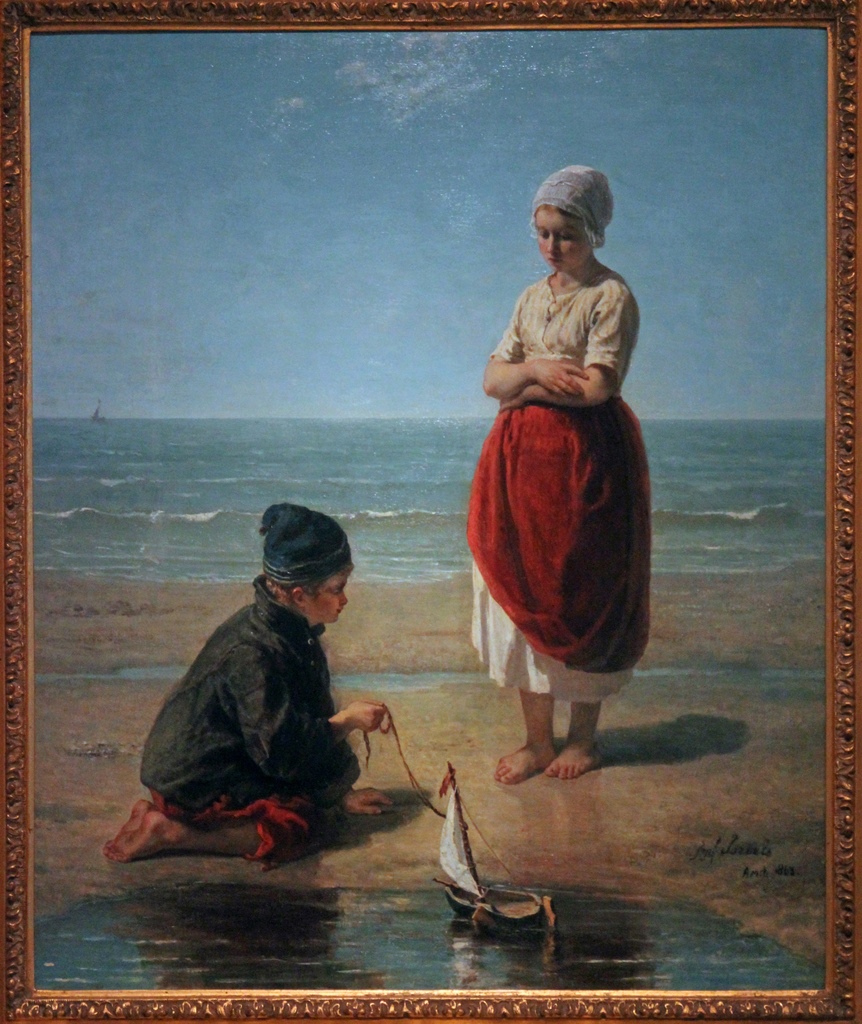The Amsterdam Museum,
located to the south of Dam Square, is home to many displays, artworks and other
articles related to the history of the city. On arriving, we headed to the
museum's central courtyard to get our bearings.
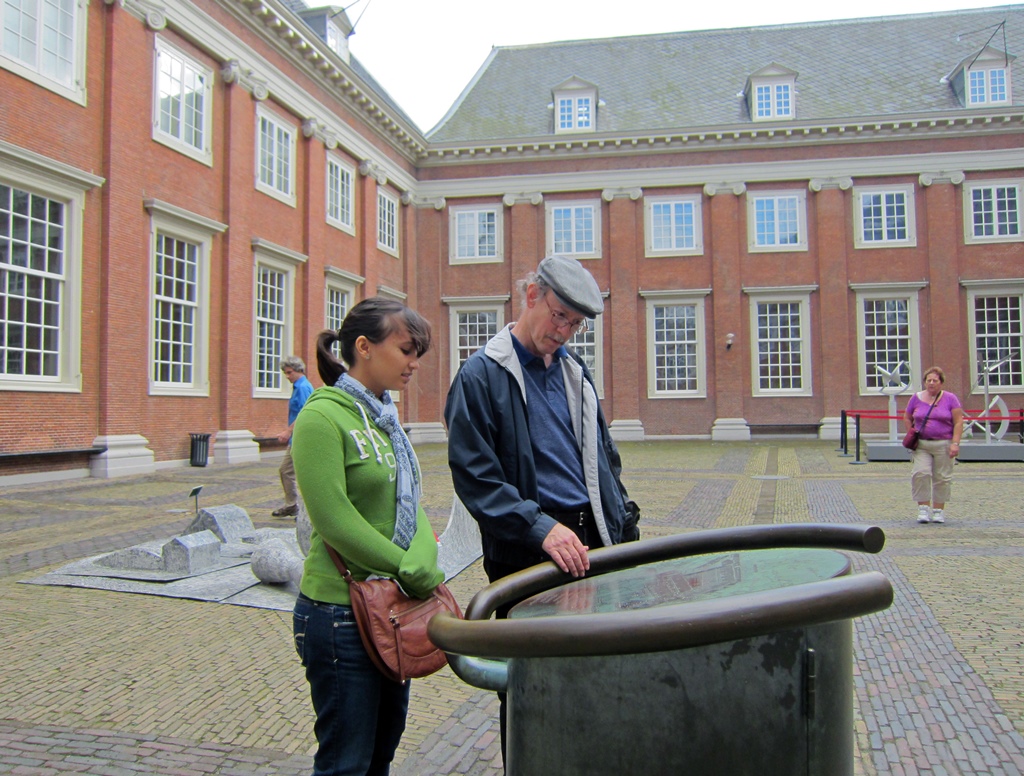
Connie and Bob and Map in Courtyard
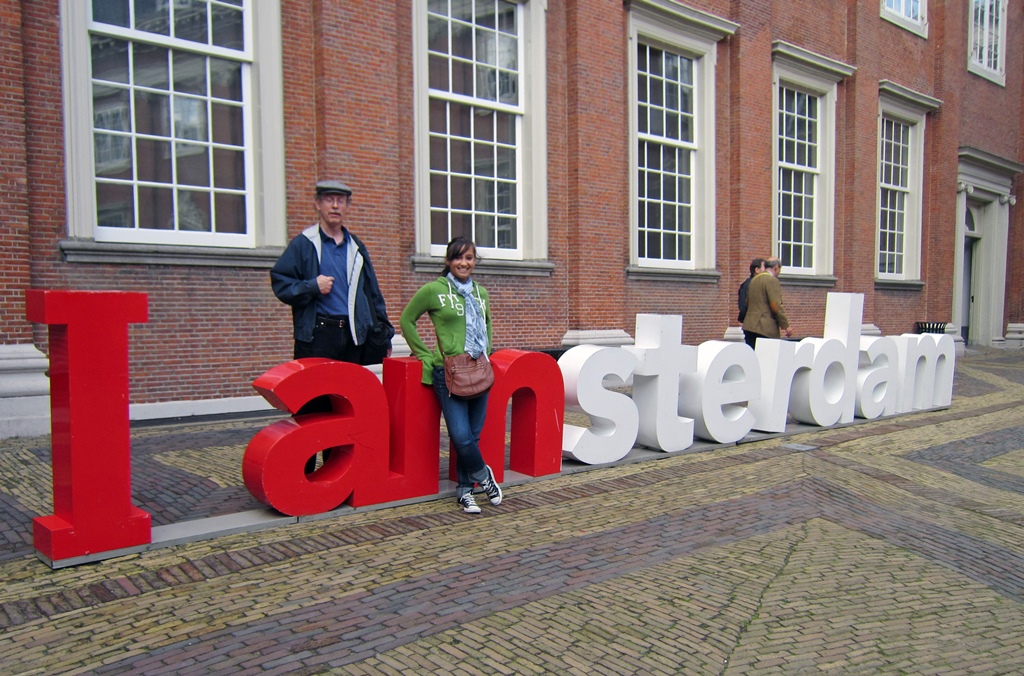
Bob and Connie in Courtyard
Many of the articles were related to the city's military history. The city
was a military power for many years, a naval power especially. (FYI, a ship's
camel was a Dutch invention that could be affixed to the sides of a large
ship to increase its buoyancy and reduce its draft in shallow waters – a very
useful thing on the Zuiderzee.)
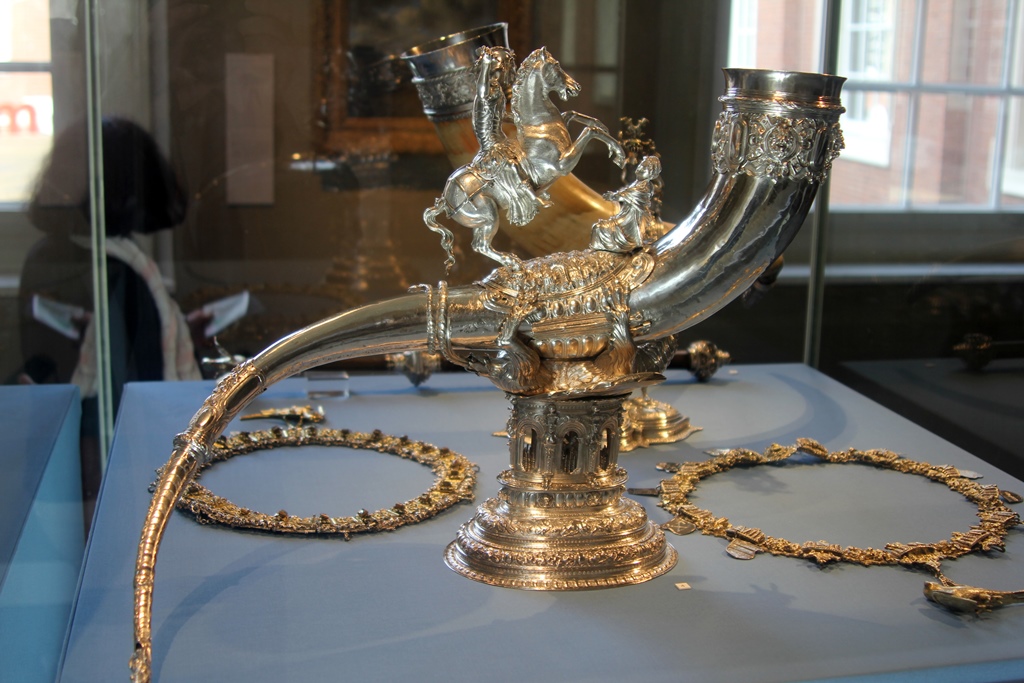
Drinking Horn of the Longbowmen's Guild (1566)
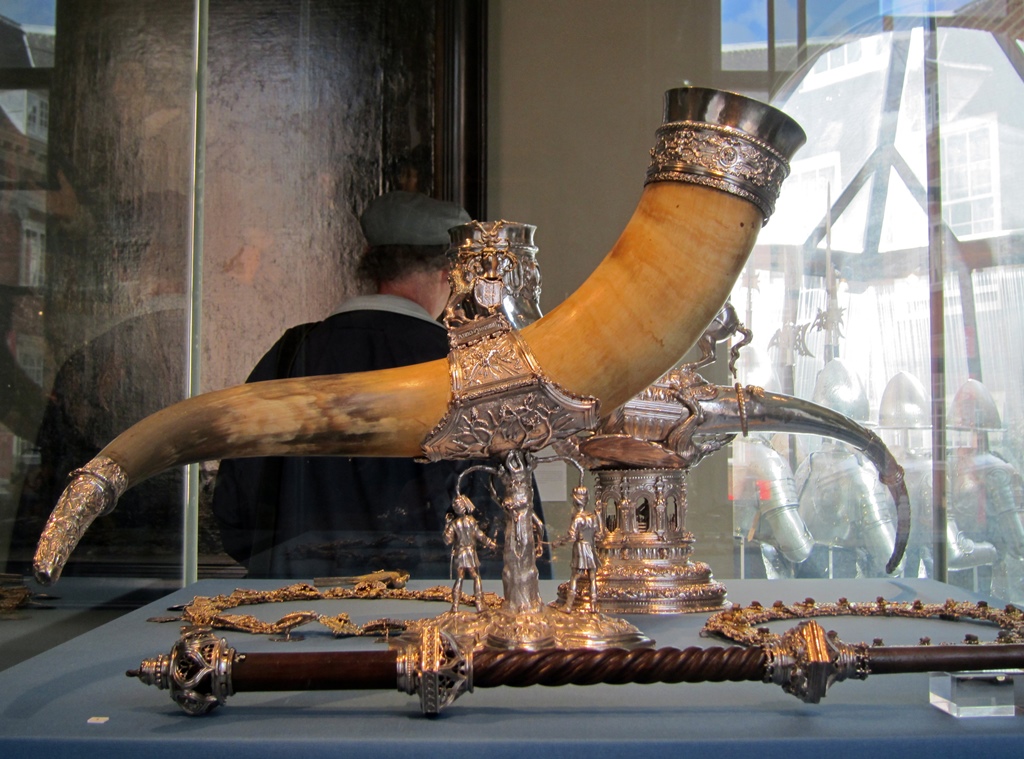
Drinking Horn of the Crossbowmen's Guild (1566)
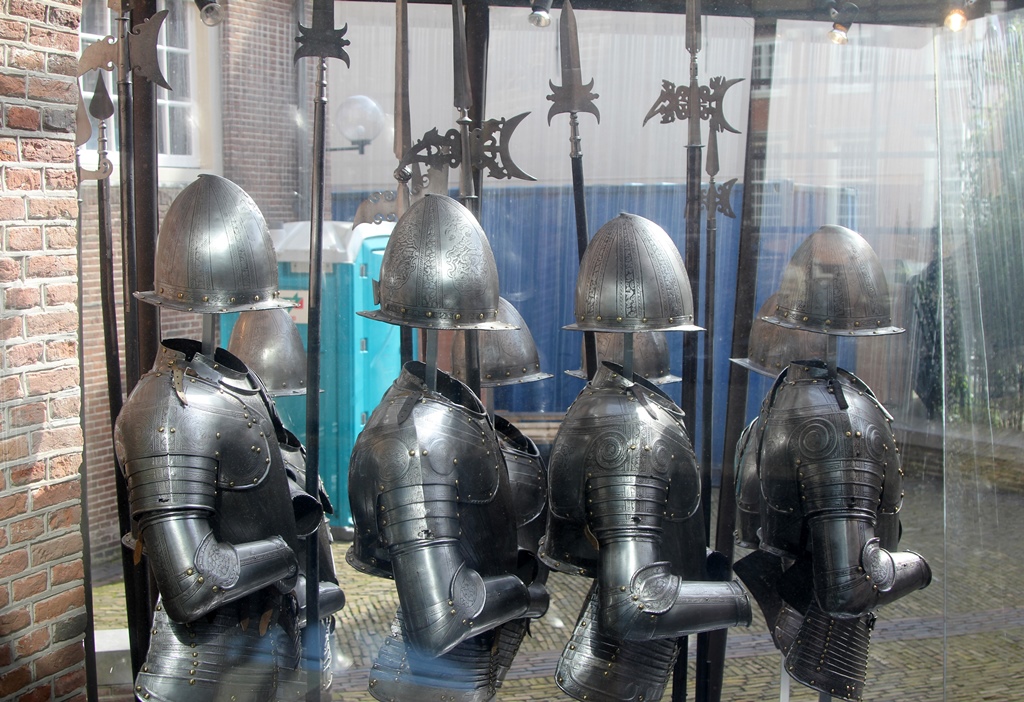
Armor and Weaponry
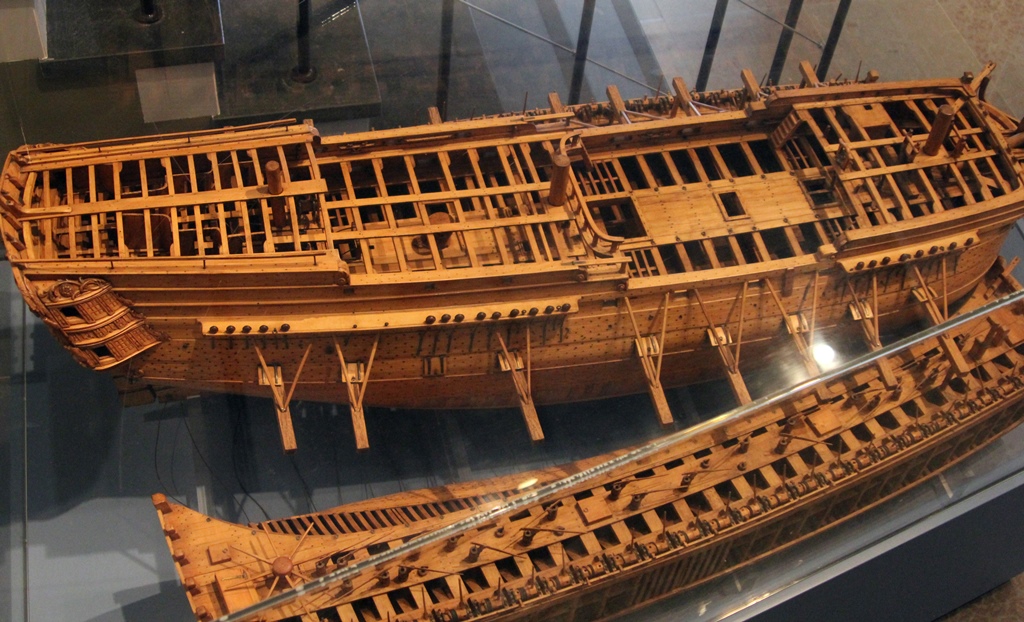
Model of a Ship's Camel (ca. 1742)
Other articles came from the day-to-day lives of the city's citizens at
different points in time. The wealthier citizens naturally had nicer articles:
Upper-Class Drawing Room
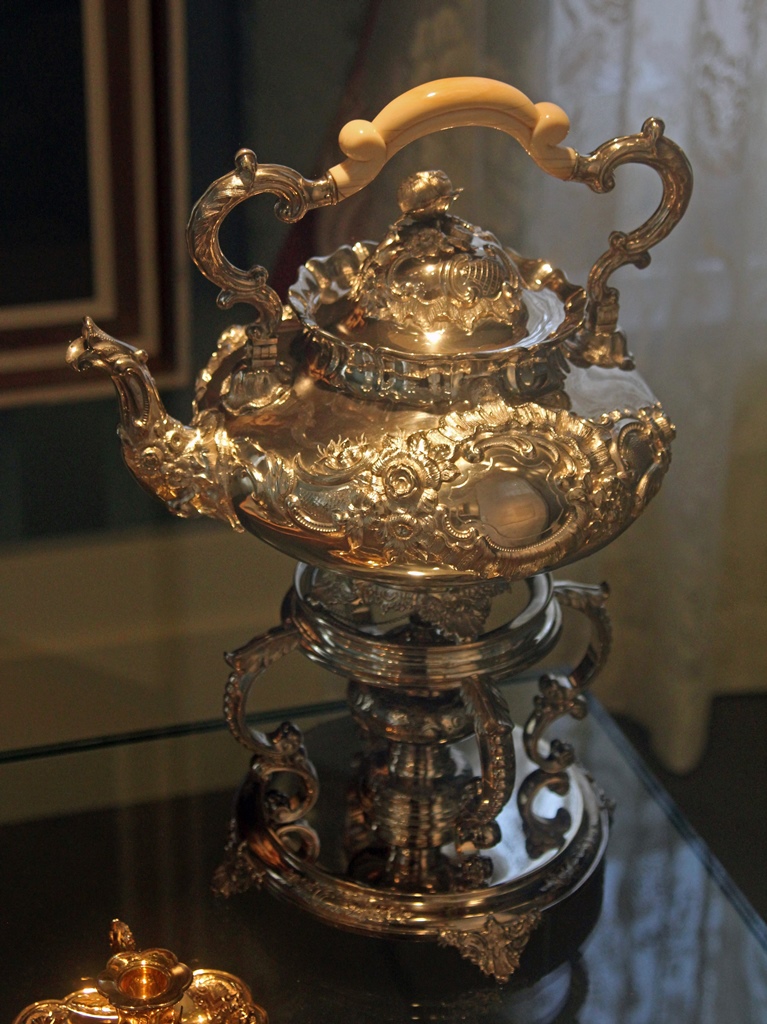
Kettle on a Stand, Johannes Hendrik Schmidt (1853)
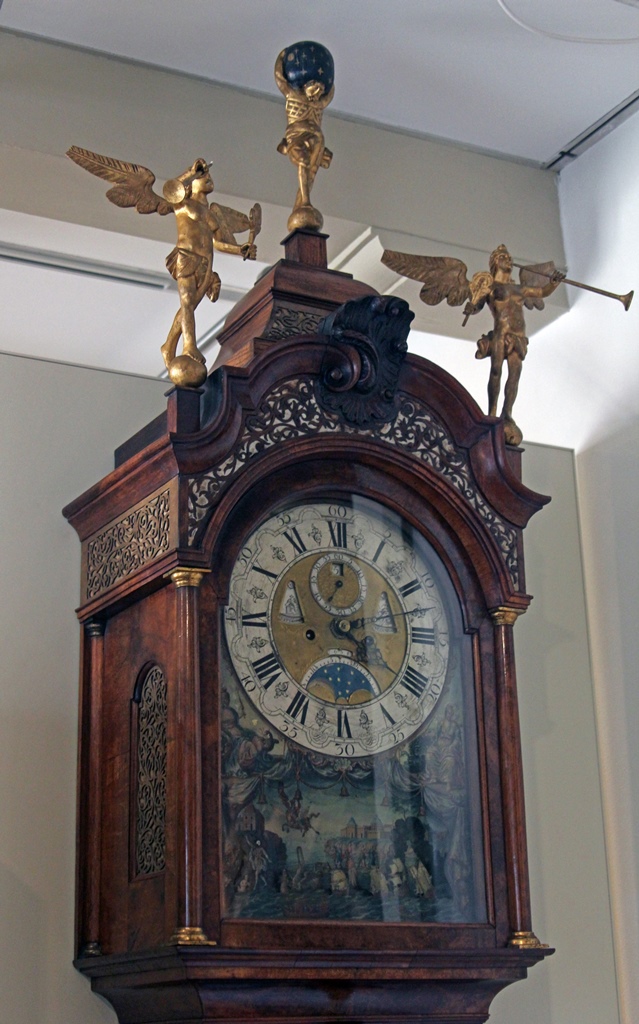
Longcase Clock with Mechanism, Jan Henkels (ca. 1770)
The wealthy could also commission portraits. Such as group portraits:
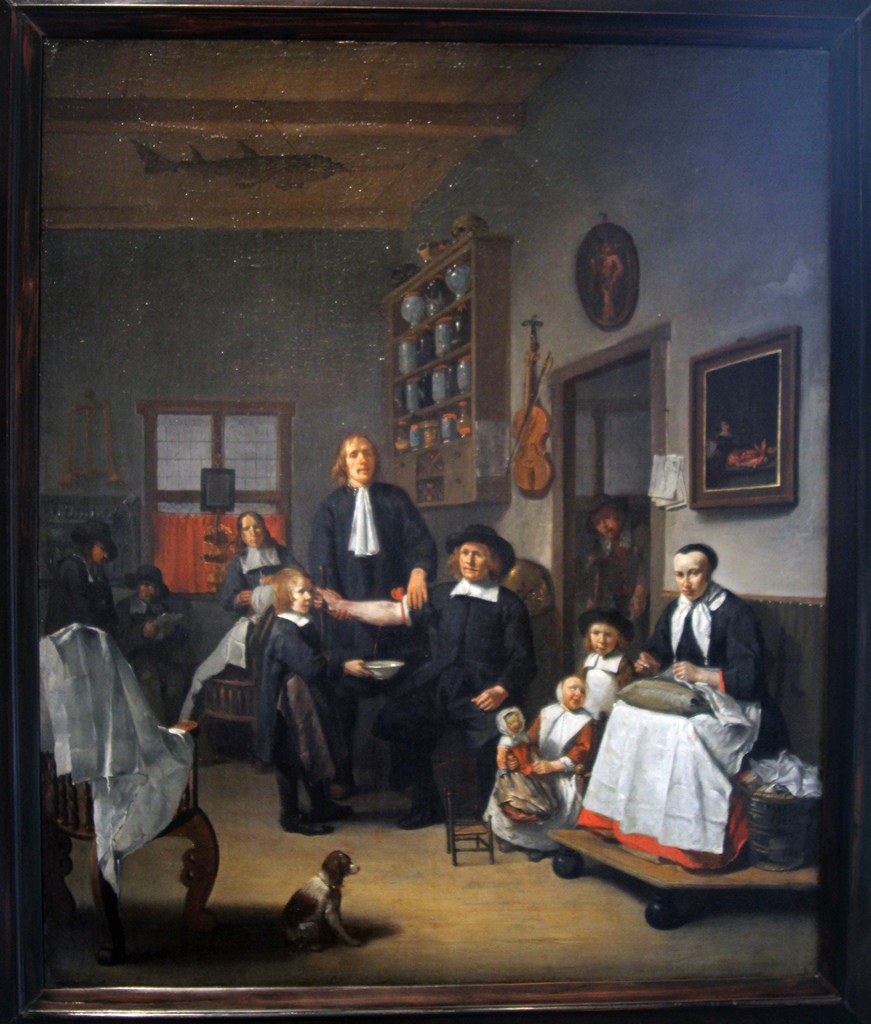
Jacob Fransz and his Family, Egbert van Heemskerck (1669)
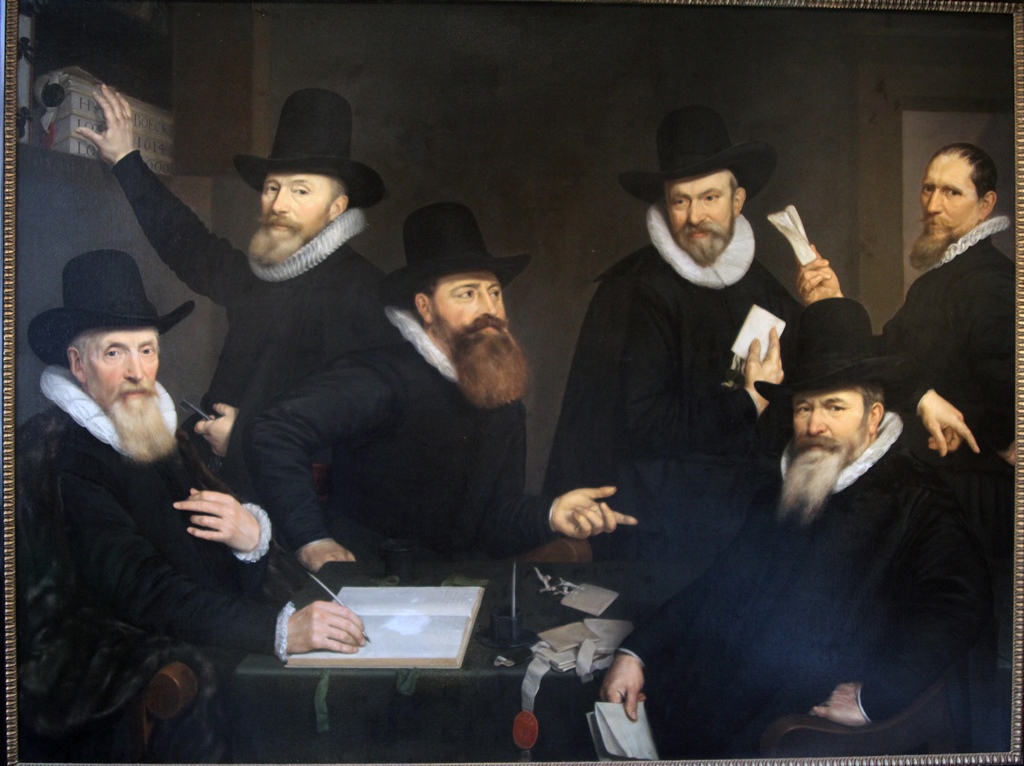
Governors of the Old Men's and Women's Home, Cornelis van der Voort (1618)
Early Amsterdam artworks in general followed the same pattern as they did in
the rest of Europe. In other words, at first they almost exclusively depicted
religious subjects.
The Resurrection, Anonymous (ca. 1500)
But following the Reformation, it didn't take long for the people of Amsterdam
to ask for different subject matter from the painters. As noted above,
portraits were popular. But as the city grew rich and civic improvements
became commonplace, portraits of buildings were also requested.
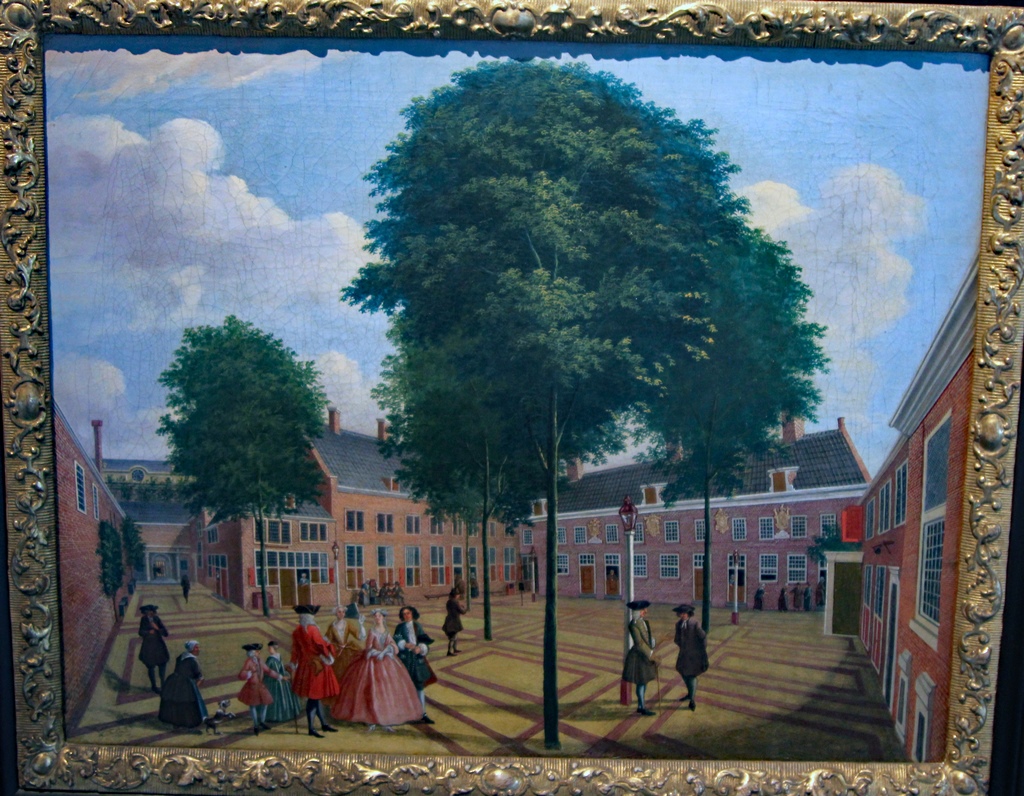
Courtyard of the Leper House, Louis Chalon (1735)
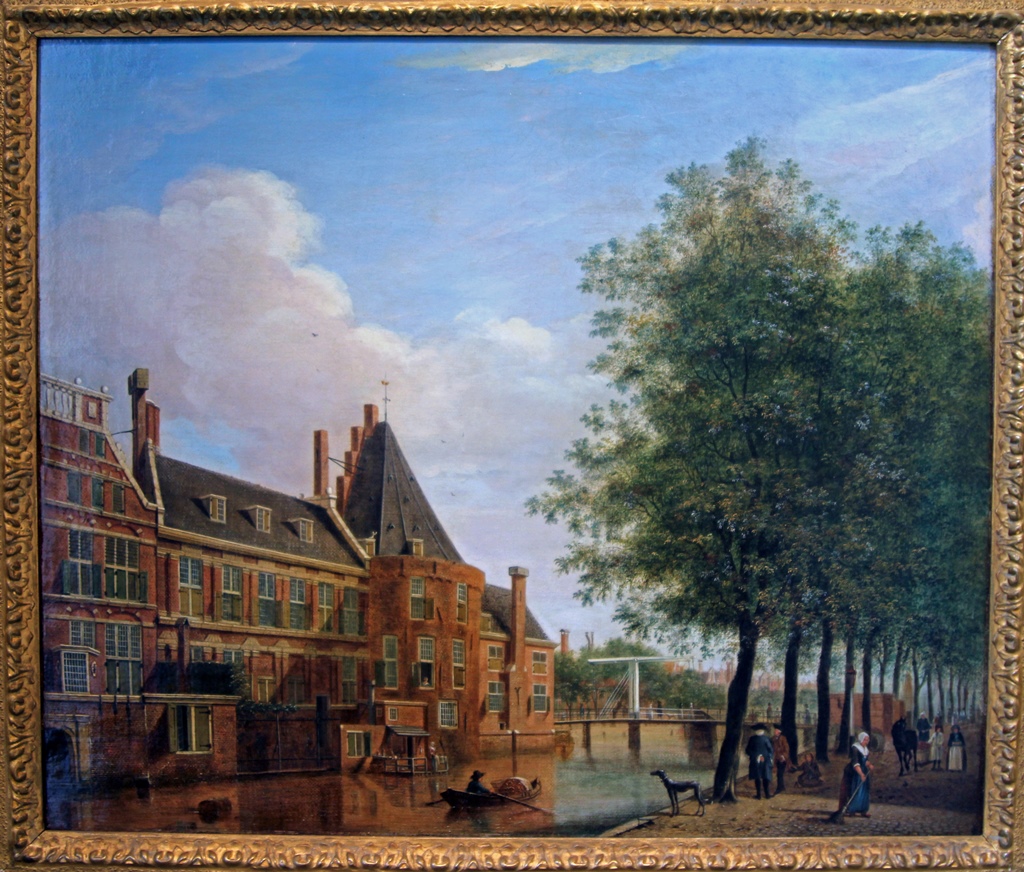
Harquebusiers Civic Guard on the Amstel, Jan Ekels the Elder (1775)
Nieuwmarkt with Weigh House, Isaac Ouwater (ca. 1782)
The following paintings of Dam Square show some of its changes through the
years. The Dam Square at one time had a weigh house of its own – the one in
the Nieuwmarkt was created when the Dam Square weigh house could no longer
handle all of the traffic. The Dam Square weigh house also pre-dated the Royal
Palace, as seen in the first painting. It was not removed until 1808, thanks
to Napoleon's brother Louis.
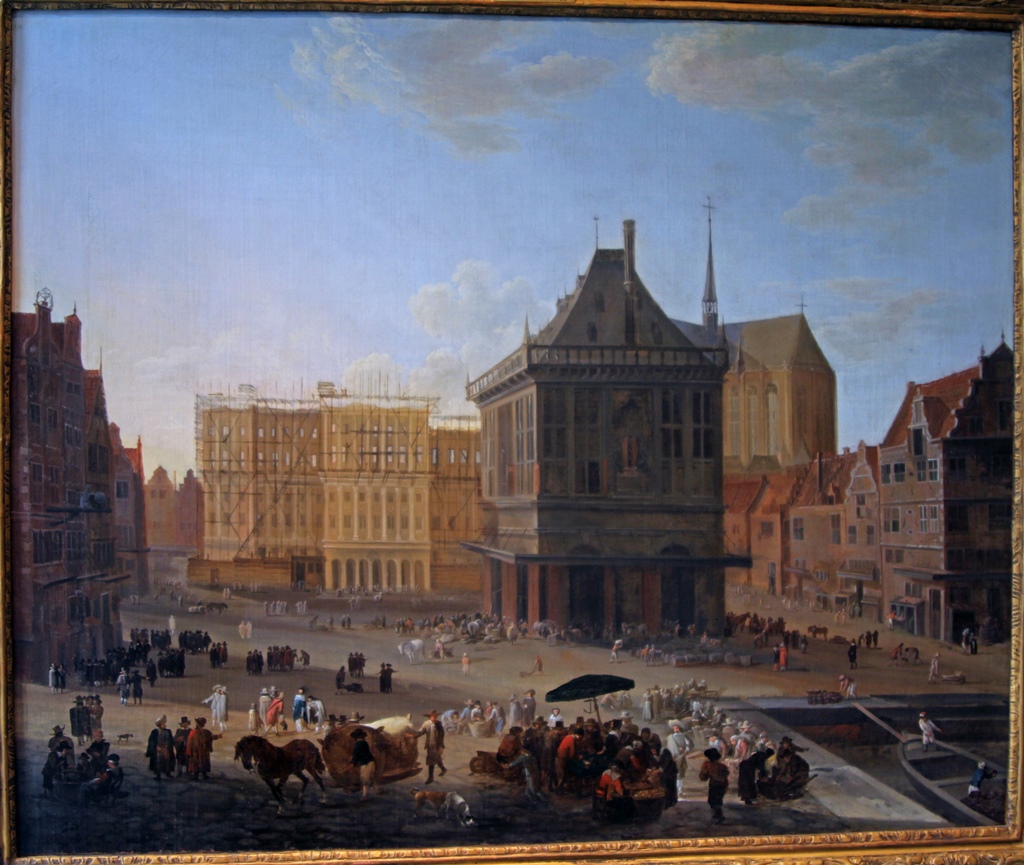
Weigh House with Palace Being Built, Jacob van der Ulft (ca. 1656)
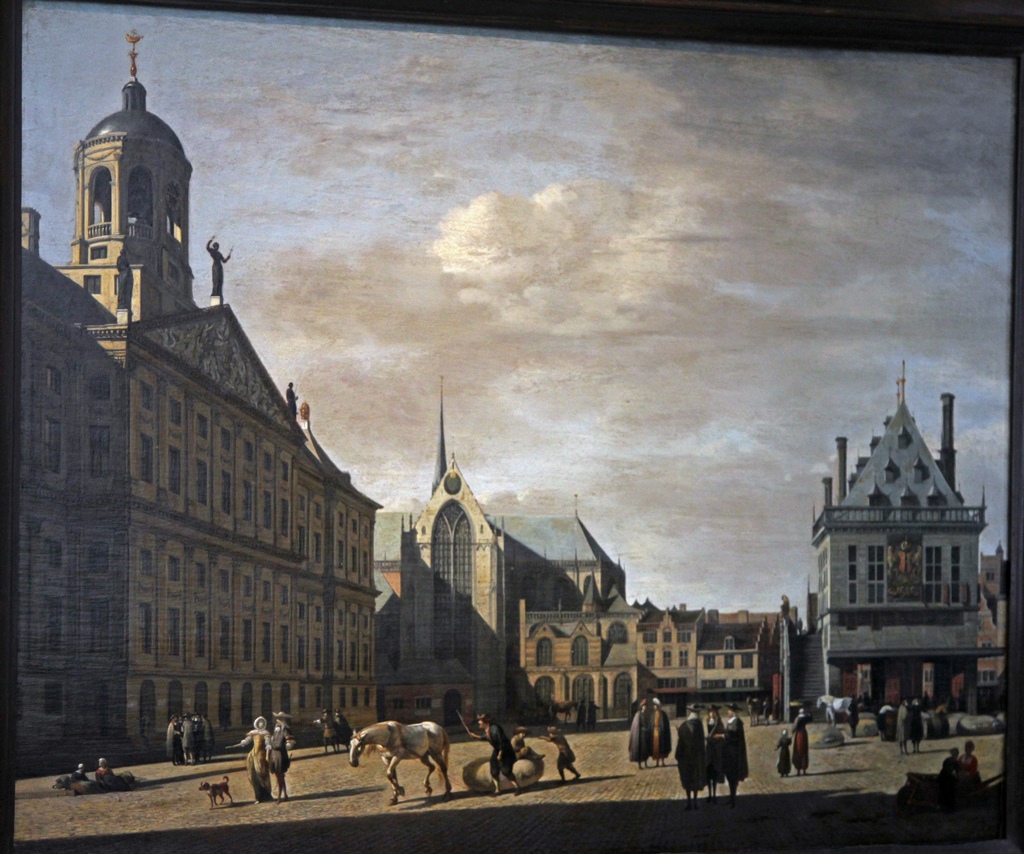
Palace with Weigh House, Gerrit Berckheyde (1674)
Palace Without Weigh House, Fredericus Theodorus Renard (19th C.)
But a subject that never seems to get old with the people of Amsterdam is the
carryings-on of their fellow citizens.
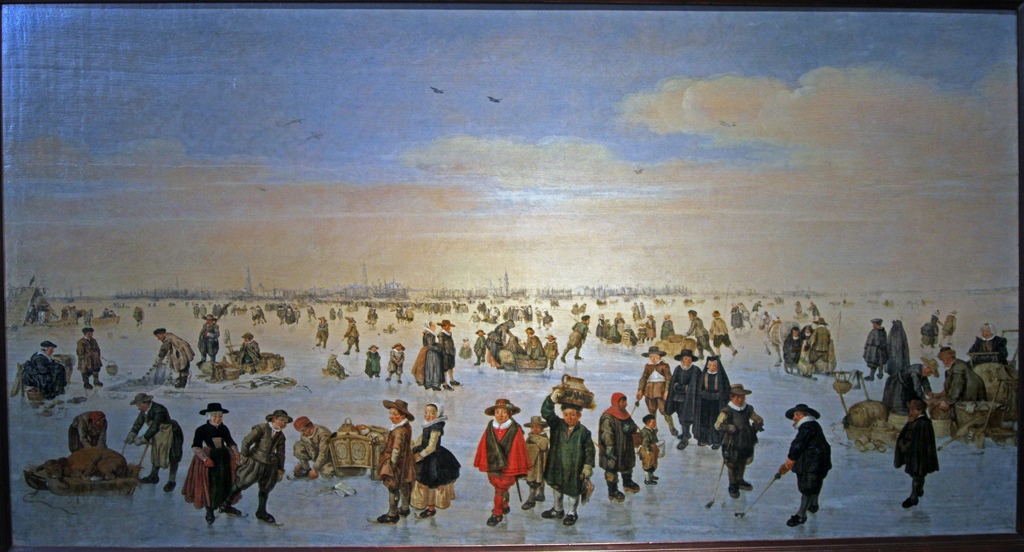
Frost Fair on the IJ, Arent Arentsz (1621-23)
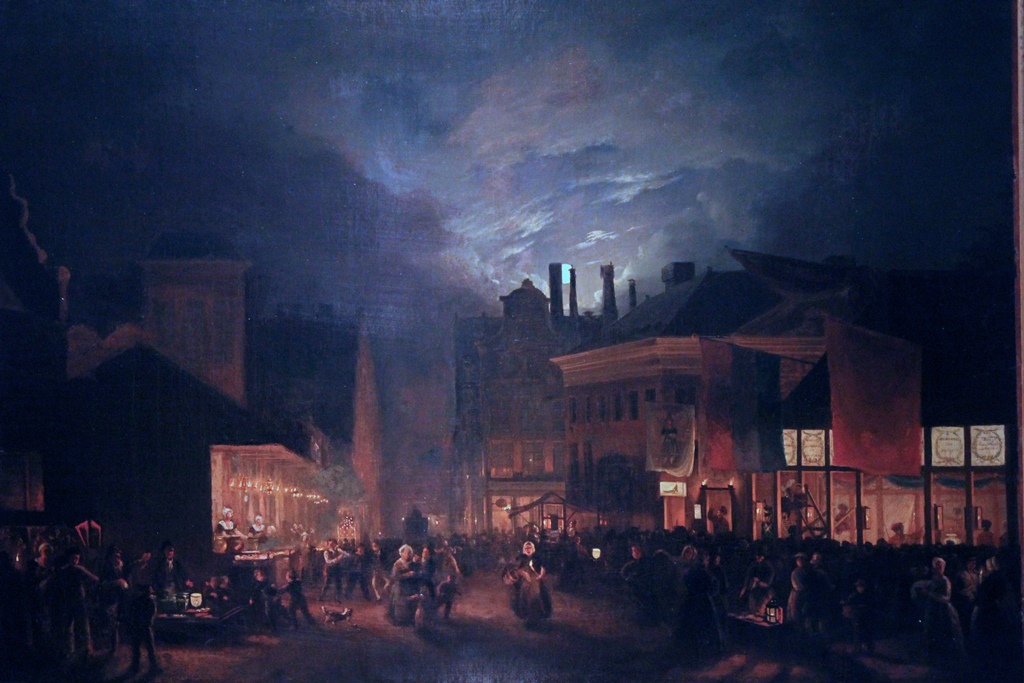
Botermarkt Fair by Night, Hendrik Gerrit ten Cate (1834)
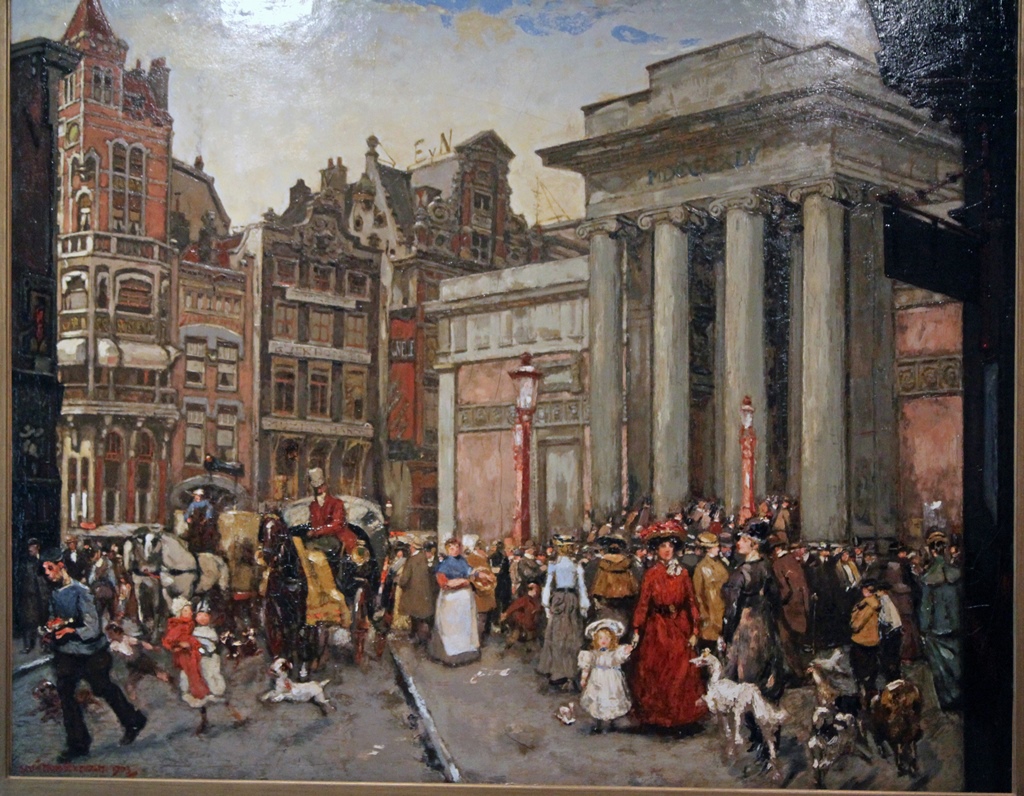
Zocher's Stock Exchange, Martin Monnickendam (1903)
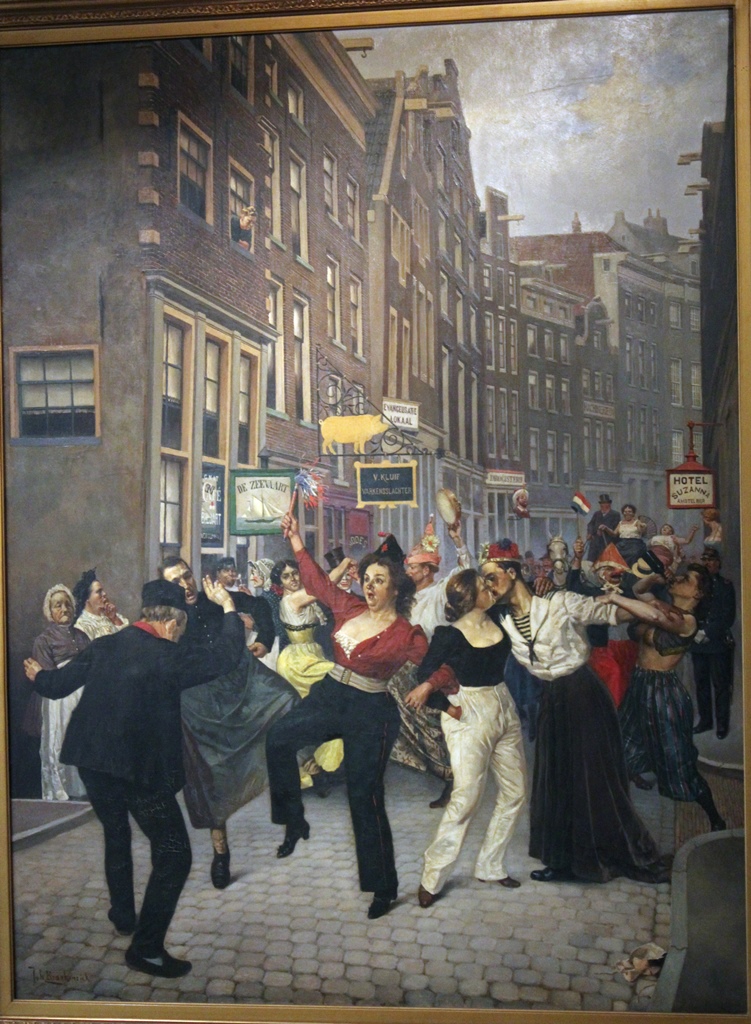
Hartjes Day, Johan Coenraad Braakensiek (1926)
The Children of the Sea, Jozef Israëls (1863)
I'm not sure whether this came from the painters or their customers, but
during the 17th Century, there seems to have been something of an appetite
for the gruesome.
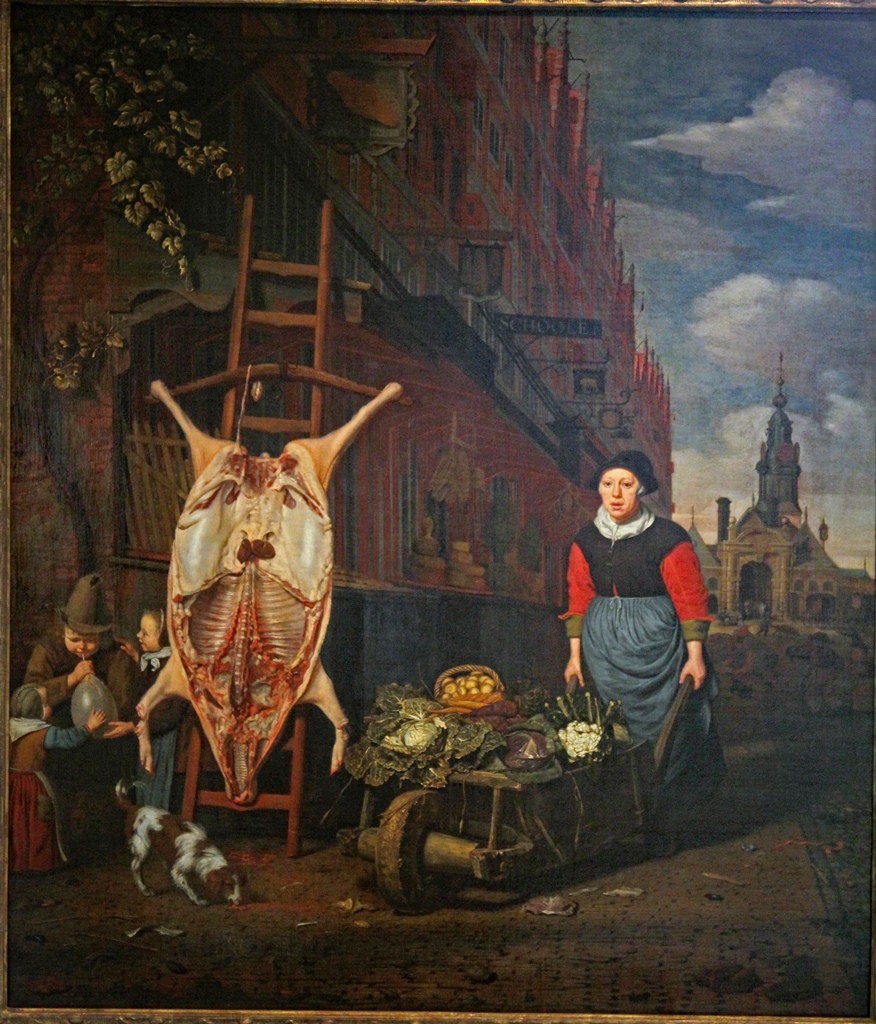
Pig on a Rack, Michiel van Musscher (1668)
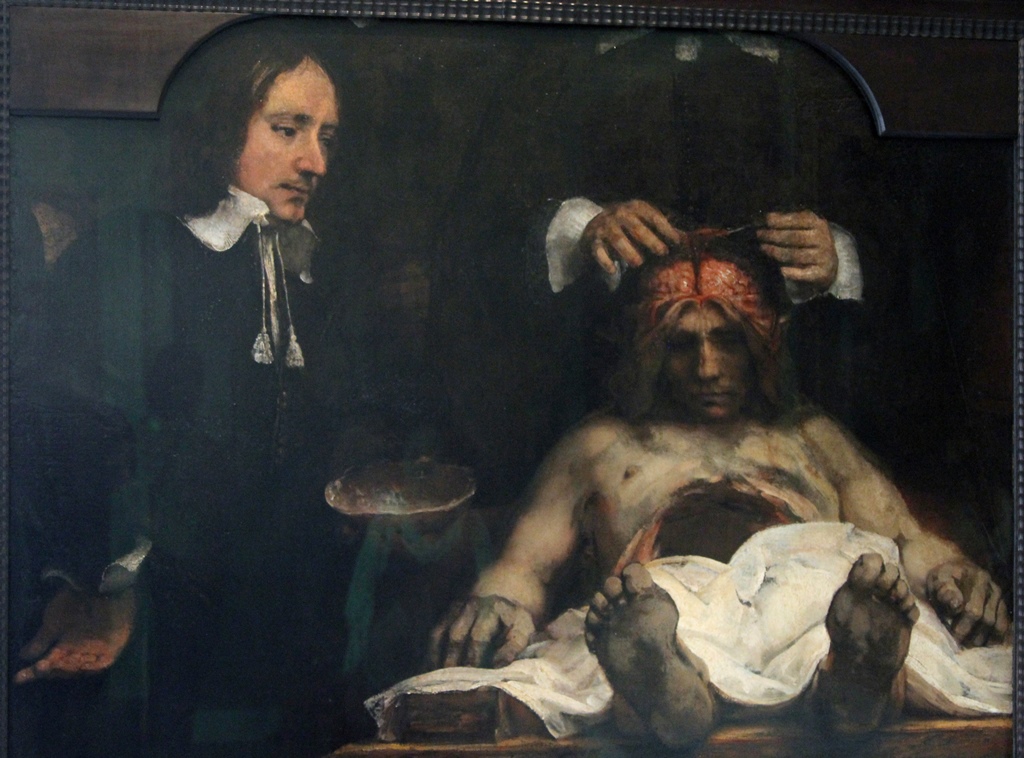
The Anatomy Lesson of Dr. Jan Deijman, Rembrandt (1656)
Having exhausted the museum's displays (and ourselves), we found that it was
time to return to the hotel, even though it was only late afternoon. You may
wonder why this would be the case. The answer is a little complicated – continue
to the next page for all the details.







